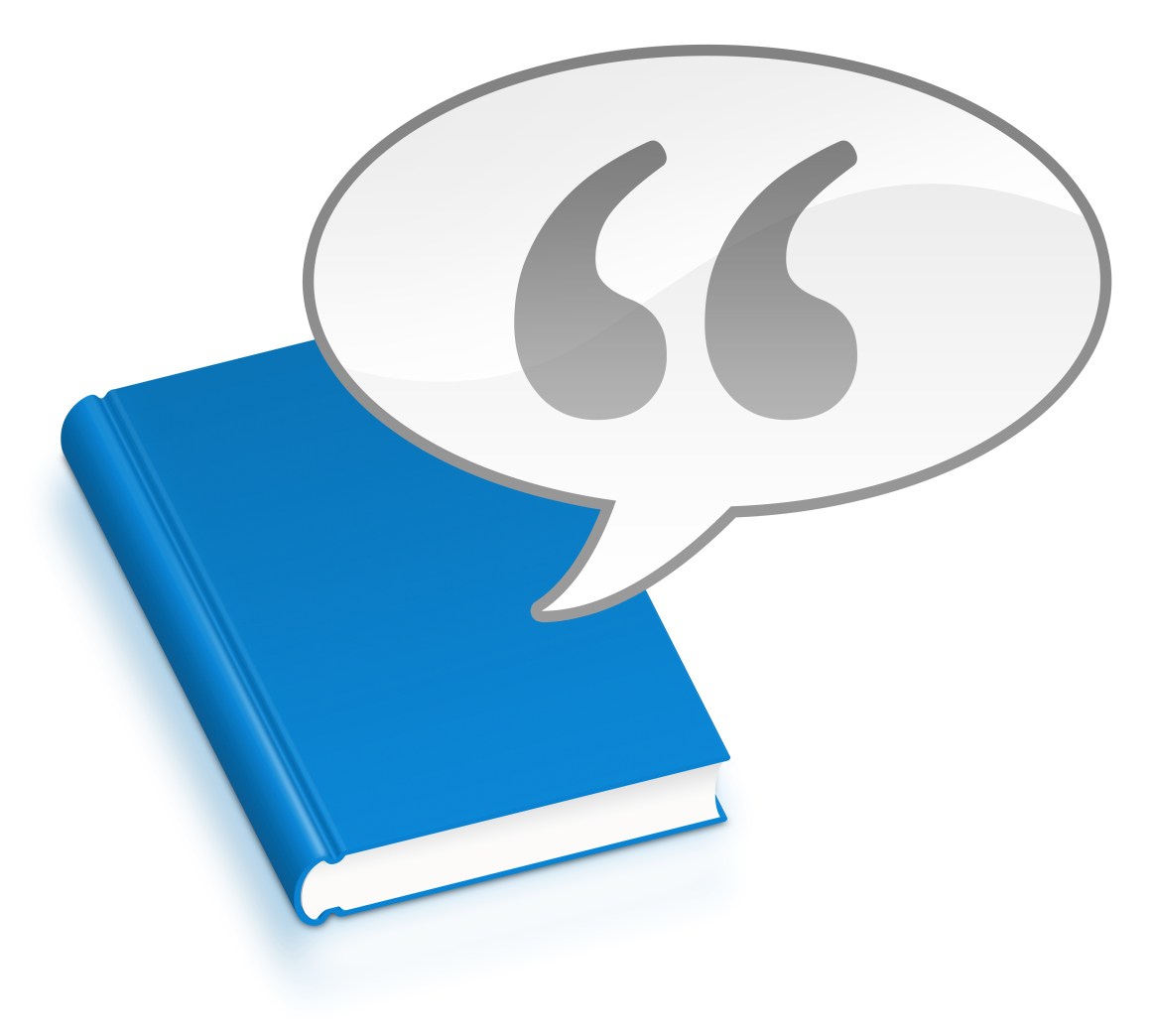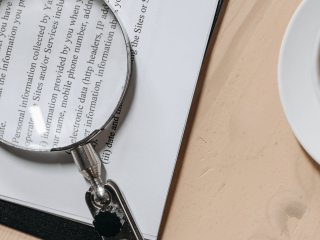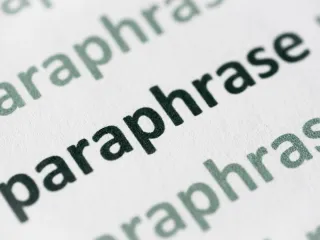What are APA citations?
APA stands for the American Psychological Association, an organization that developed a citation guide to help researchers and publishers in the social and behavioral sciences provide a uniform way of presenting their work.
While other industries or areas of study may follow the MLA or Chicago style, fields that primarily use APA reference style expect its use in research papers and publications.
The APA style guide, formally known as the Publication Manual of the American Psychological Association, has undergone several revisions. The most current style guide is the APA 7th edition. This guide includes detailed instructions on everything from citation format and headings to in-text citation and creating a reference list.
APA Style offers annotated sample papers.
Citations play a crucial role in academic writing.
They are used to give credit to the source of information, thus helping to avoid accidental plagiarism and substantiate claims—they lend credibility to your writing by showing that your arguments and statements are supported by established research.
With resources like the Quetext platform, creating APA citations can be done effortlessly, ensuring your work remains original and appropriately credited.
For more information on how to utilize citations in MLA, APA, and Chicago Style for academic work, check out our comprehensive citation guide on the Quetext blog.
Core Components of APA Style Citations
A standard APA format citation comprises several core components.
Understanding how to use these components correctly will ensure that your in-text references and reference list entries are accurate and complete. Each component serves a specific purpose and has particular formatting rules. Below, we’ll examine the four core elements of APA style citations: author(s), publication date, work title, and publisher.
In the upcoming H3 subheadings, we will delve into the specifics of each component, including how it is used in reference list citations and in-text citations. Remember that while these components are typically consistent, there can be some variance depending on the type of source you’re citing.
Author(s)
The first element in an APA citation is the author’s name. The reference list presents the author’s last name first, followed by their initials. It’s crucial to separate the author’s last name and initials with a comma and to put a period after each initial.
In the case of multiple authors, list them in the order they appear in the source, separating each with a comma, and use an ampersand (&) before the last author’s name. If there are 21 or more authors, include the first 19, insert an ellipsis (…), and add the final author’s name.
For in-text citations, include the author’s last name and the year of publication, separated by a comma. If directly quoting, also provide the page number.
For example, a reference by one author in-text may look like:
As Smith (2023) mentions…
(Smith, 2023)
Mark argued that (as cited in Smith, 2023, p. 113)
Publishing Date
The publication date provides context about the timeliness of the research. In a reference list entry, place the year of publication immediately after the author’s name, in parentheses, followed by a period.
For in-text citations, include the year of publication alongside the author’s last name.
Title of the Work
The title provides a precise description of the source’s content. In a reference list, capitalize only the first word of the title and subtitle, any proper nouns, and any words following a colon or a dash in the title, and italicize the title if it’s a long work (e.g., books, tv shows) or if it’s a periodical. Shorter works like journal articles, chapters, or web pages keep the title in plain text.
In in-text citations, the title is generally only included if the source has an author.
Publisher
The publisher information is only necessary for a reference list, not in-text citations. For books, reports, and other non-periodical sources, include the publisher’s name at the end of the citation before the period.
There’s no need to have business words like “Company” or “Inc.”. If two or more organizations are co-publishers, separate their names with a semicolon.
The Two Types of APA Citations
What are the two types of citations used in APA style?
APA citations primarily consist of in-text citations for paraphrasing and reference page citations.
Both serve different purposes and are integral to accurately citing your sources and avoiding unintentional plagiarism.
APA In-Text Citations
What are the in text citations APA adheres to?
APA in-text citations provide brief details of the source within the text as an abbreviation and guide the reader to the complete reference in the reference list at the end of the paper.
The basic format for an in-text citation consists of the author’s last name and the date of publication, separated by a comma. If the direct quote is used, the page number should be included.
In-text citations in APA can be either narrative or parenthetical. In a narrative citation, the author’s name is included in the sentence, and the year is placed in parentheses following the author’s name.
In a parenthetical citation, the author’s name and the publication year (along with a page number, if applicable) are enclosed in parentheses at the end of the sentence. You do not need to type the author’s full name.
For example:
Narrative: Jackson (2021) argues that…
Parenthetical: (Jackson, 2021)
APA Reference Page Citations
The reference page citation, also known as the reference list entry, provides the full details about the source. It should include the following key elements:
- Author field: This should be the author’s last name followed by their initials. If the work has multiple authors, list them in the same order as they appear in the source (often alphabetical order) using an ampersand (&) before the last author’s name.
- Year of Publication: Indicate the year of publication (author date) in parentheses, followed by a period.
- Title of the work: Only the first word of the title and subtitle, the first word after a colon or a dash, and any proper nouns should be capitalized.
- Source of the reference: The format of this information depends on the source type (e.g., the title or DOI—digital object identifier—of the journal, volume number and issue number for a journal article or magazine articles, the publisher name for a book citation, and the URL for a web page).
Pay attention to capitalization. For example:
Journal Article: Smith, J. L., & Brown, B. (2020). The effects of climate change on agriculture. Journal of Climate Studies, 12(4), 15-28. https://doi.org/10.xxxx/xxxxx
Remember to use a hanging indent for each reference and list them alphabetically by the first author’s last name.
Formatting a Paper in APA Style
Formatting a paper in APA style goes beyond just creating proper citations for your sources; it also provides the basis for the overall structure and formatting of your paper.
When you follow these guidelines, you avoid cases of plagiarism and ensure that your work is easy to read and understand. Below are the three main sections of an APA format:
Research Organization
The American Psychological Association’s APA manual provides a clear structure for the organization of your research paper. Each part serves a specific purpose and contributes to the overall flow of your paper:
- Title Page: Contains the paper’s title, author’s name, and institutional affiliation.
- Abstract: A concise summary of the key points of your research.
- Introduction: Briefly introduces the topic and the purpose of the research.
- Methodology: Details how the research was conducted.
- Main Body: Discusses the research in detail using appropriate headings and subheadings.
- Results: Presents the findings of your research.
- Reference Page: Lists all the sources cited in the paper, following APA citation style – including year of publication and page range of the research publication.
Writing Style & Language
The APA style guide emphasizes clarity, precision, and a bias-free language in academic writing:
- Use technical terms relevant to the field of study.
- Ensure language is concise and straightforward.
- Avoid using slang, biased language, or humor.
- Use pronouns, nouns, and verbs accurately.
- Correctly use punctuation marks, such as quotation marks, commas, and periods.
Page Formatting
The overall presentation of the paper also matters in APA format. Here are some guidelines:
- The text should utilize double spacing.
- Margins should be a 1 inch indent on all sides.
- The recommended font is Times New Roman, size 12.
- Include a running head and page numbers on each page.
- The first line of every paragraph should be indented by 0.5 inches.
- Use italics for titles of books, periodicals, and microfilm publications.
Having an APA paper template on hand is always a good idea to guide your formatting. Remember that these are basic guidelines and the specific requirements can vary depending on your instructor or publication.
Conclusion
APA style, developed by the American Psychological Association, guides researchers, publishers, and students in fields within the social and behavioral sciences.
APA citations, a crucial component of this style, are used to avoid academic dishonesty, establish credibility, and allow readers to contextualize the original source of a reference.
The key points of APA citations revolve around the author(s), publishing date, title of the work, and the publisher. It’s essential to understand the nuances between APA in-text citations and APA reference page citations – which are two different ways to cite a source in your research paper.
Furthermore, formatting your paper in APA style doesn’t end with citations; it extends to the organization of your paper, the language you use, and how your page is physically formatted.
Although it may seem challenging, using tools like Quetext’s citation generator can make adhering to APA citations more manageable. This tool is helpful for students working on research papers and teachers needing to verify the originality of their students’ work.
Quetext’s advanced algorithms can identify potential plagiarism and help generate accurate APA citations, making it a valuable ally in academic writing.
Quetext is not just a plagiarism detection tool; it’s also a platform designed to uphold academic integrity and make referencing a breeze. Whether you’re a student trying to perfect your APA paper or a teacher seeking to ensure originality in student submissions, Quetext supports you.
For more insights on citation-related topics, visit our blog. To easily generate your APA citations, try out Quetext’s citation generator today.









